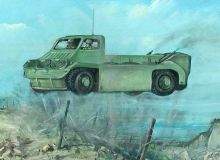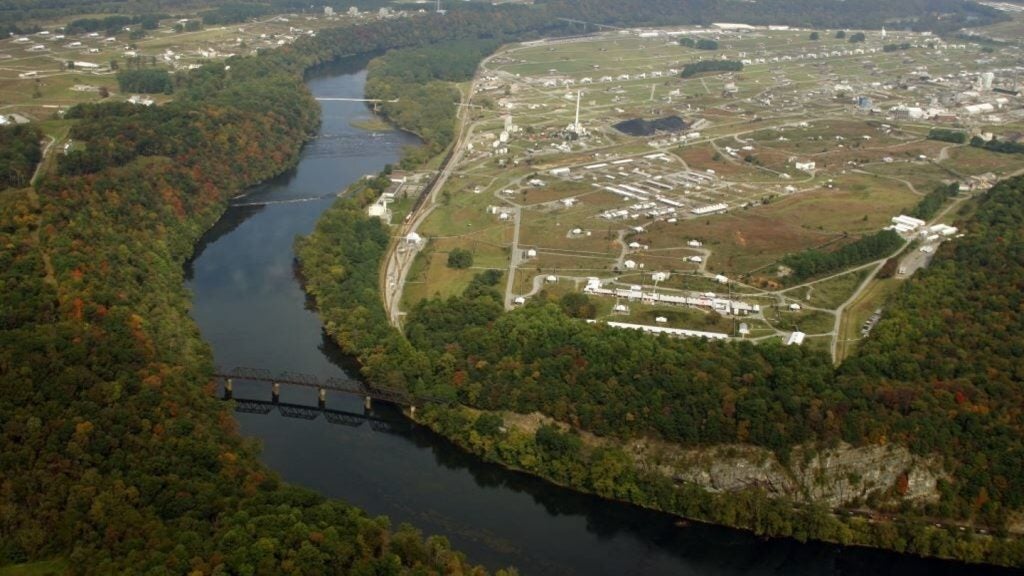
To coincide with the opening of a new centre to celebrate heritage at the company’s military aircraft factory in Warton, Lancashire, BAE have dug through the archives and brought to life, through animation, some extraordinary R&D projects – including the mothballed Jumping Jeep.
Reminiscent of modern VTOL flying car designs, such as Terrafugia’s, the Jumping Jeep was a concept vehicle designed by BAC Warton in the 1960s as a 4×4 transporter capable of leaping over obstacles.
On encountering an obstruction, 12 vertical lift fans would kick in at a suitable angle, enabling the jeep to hop, jump or boost its forward momentum.
How well do you really know your competitors?
Access the most comprehensive Company Profiles on the market, powered by GlobalData. Save hours of research. Gain competitive edge.

Thank you!
Your download email will arrive shortly
Not ready to buy yet? Download a free sample
We are confident about the unique quality of our Company Profiles. However, we want you to make the most beneficial decision for your business, so we offer a free sample that you can download by submitting the below form
By GlobalDataDeveloped alongside the Ministry of Defence’s Fighting Vehicle Research and Development Establishment, like many of today’s most groundbreaking ideas, the project was cancelled due to lack of funds.
See Also:
Inspiring a new age of engineering
After investing £150m in R&D in 2012, BAE has made a point of inspiring a new generation of engineering through both current projects and – as we see above – the boundless bounty of imagination.
Howard Mason, heritage manager at BAE Systems, said: "Although 50 years have passed since these extraordinary designs were first put to paper, we can see how some of the technologies and ideas were developed over time and put to use now in aircraft like the F35 Joint Strike Fighter.
"BAE Systems stores more than one million historical documents and artefacts and in addition to celebrating our nation’s engineering achievements, I believe these examples of forward thinking are still inspiring for young people who are thinking about a career in engineering and considering the endless possibilities of what could be designed," said Mason.
MUSTARD and the piggy-back Fighter Jet: BAE’s other designs
To watch animations of other mothballed designs including godfather of the VTOL – the piggy-back Fighter Jet Take-Off Platform, the reusable space bound Hypersonic Aircraft known as the Multi-Unit Space Transport and Recovery Device, or MUSTARD, and the air travel revolution that never quite took off, known as the Intercity Vertical-Lift Aircraft, please click on the links below.
Related content
Intercity Vertical-Lift Aircraft
The Intercity Vertical-Lift Aircraft design from the Hawker Siddeley company was an attempt to bring vertical take-off and landing (VTOL) to commercial aircraft.
A number of designs were drawn up during the 1960s, looking very similar to our passenger planes today; however featuring rows of lift fans on either side of the body of the plane.
Hypersonic MUSTARD
Capable of reaching air speeds five times the speed of sound, MUSTARD was designed as a reusable space plane, the next evolution of the Apollo programme that put man on the moon, but for a fraction of the development cost.
The aircraft was formed of three separate crewed, delta-winged sections, each of which displayed shared ancestry with the Space Shuttle and BAE Systems’ current project, the X-37.
The piggy-back Fighter Jet
For those times when helicopters just aren’t up to the job, the Fighter Jet Take-Off Platform was a concept design that would take off from the most constrictive of landing strips carrying a winged aircraft on its back that could take off once in the clear.
The innovation was born from a collaboration between Shorts, which created the hovering P17D platform, and English Electric, which developed the lightweight piggy-backing P17A tactical strike and reconnaissance jet.








